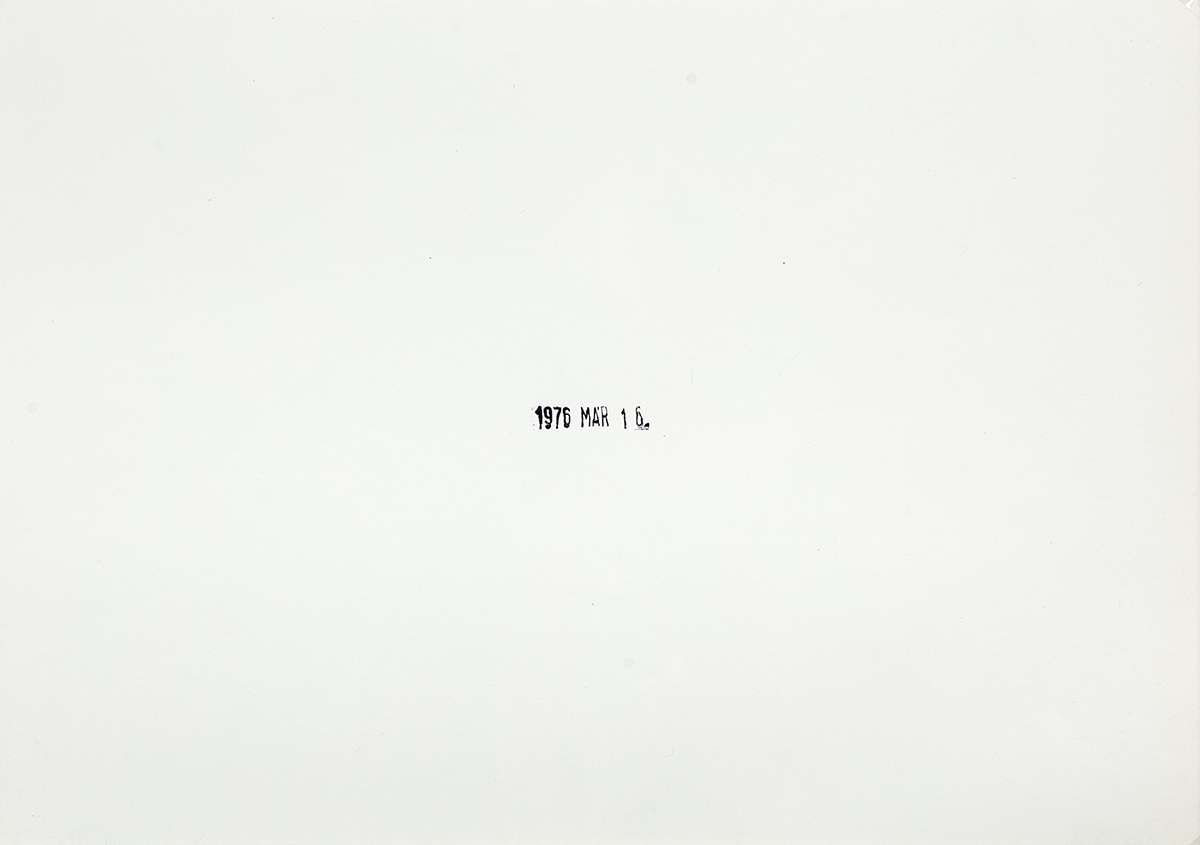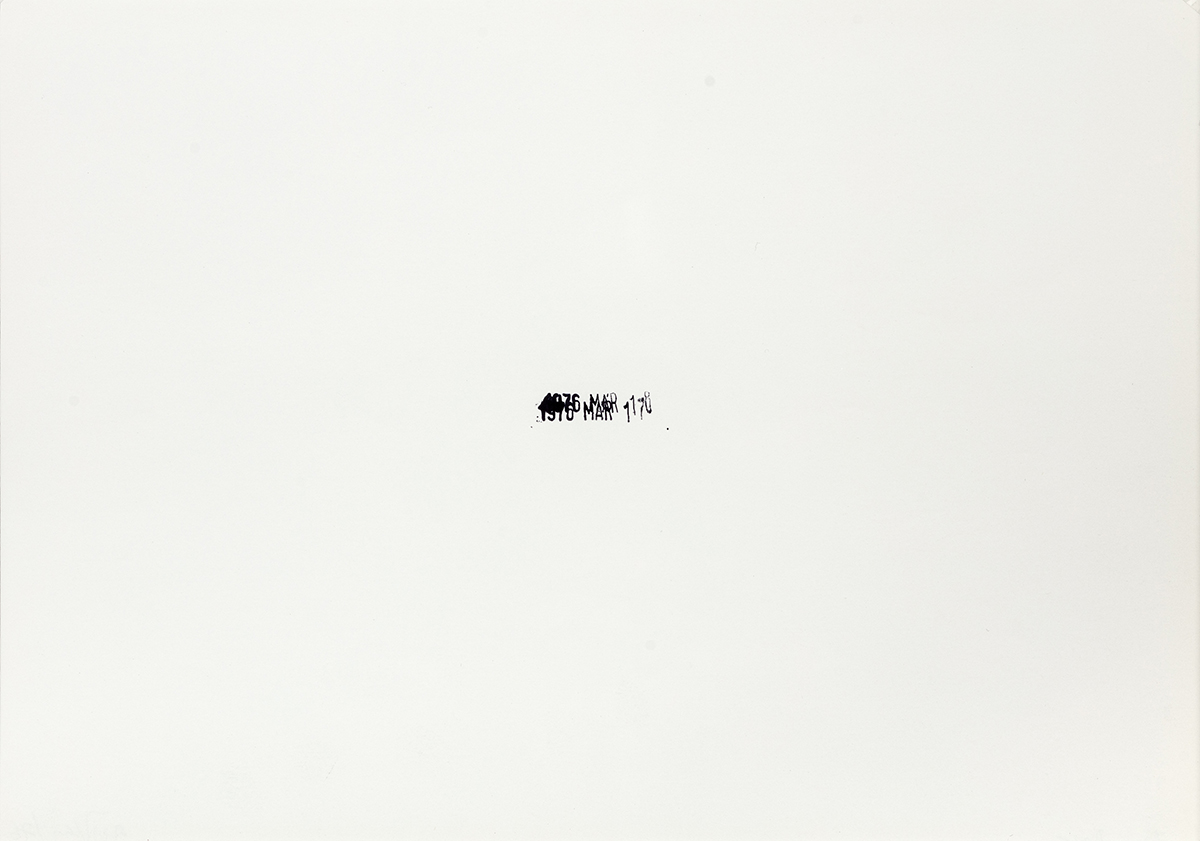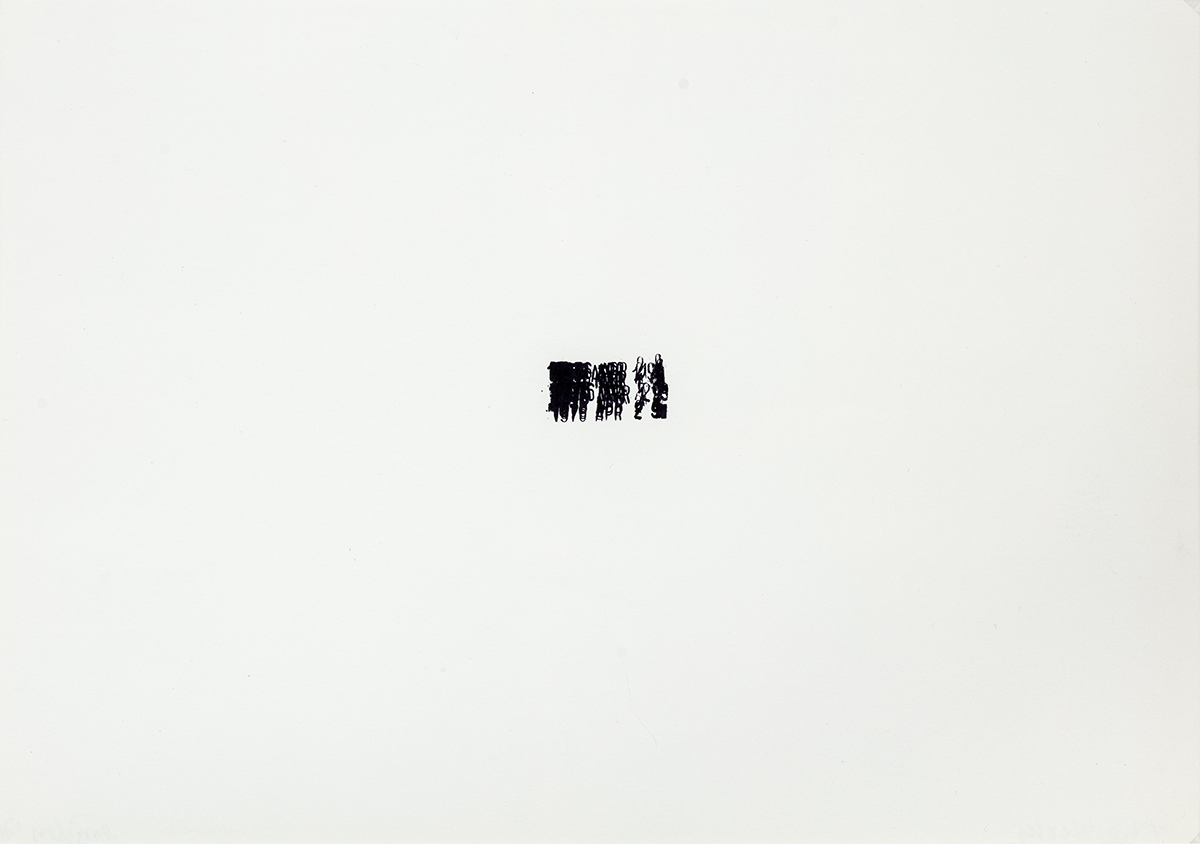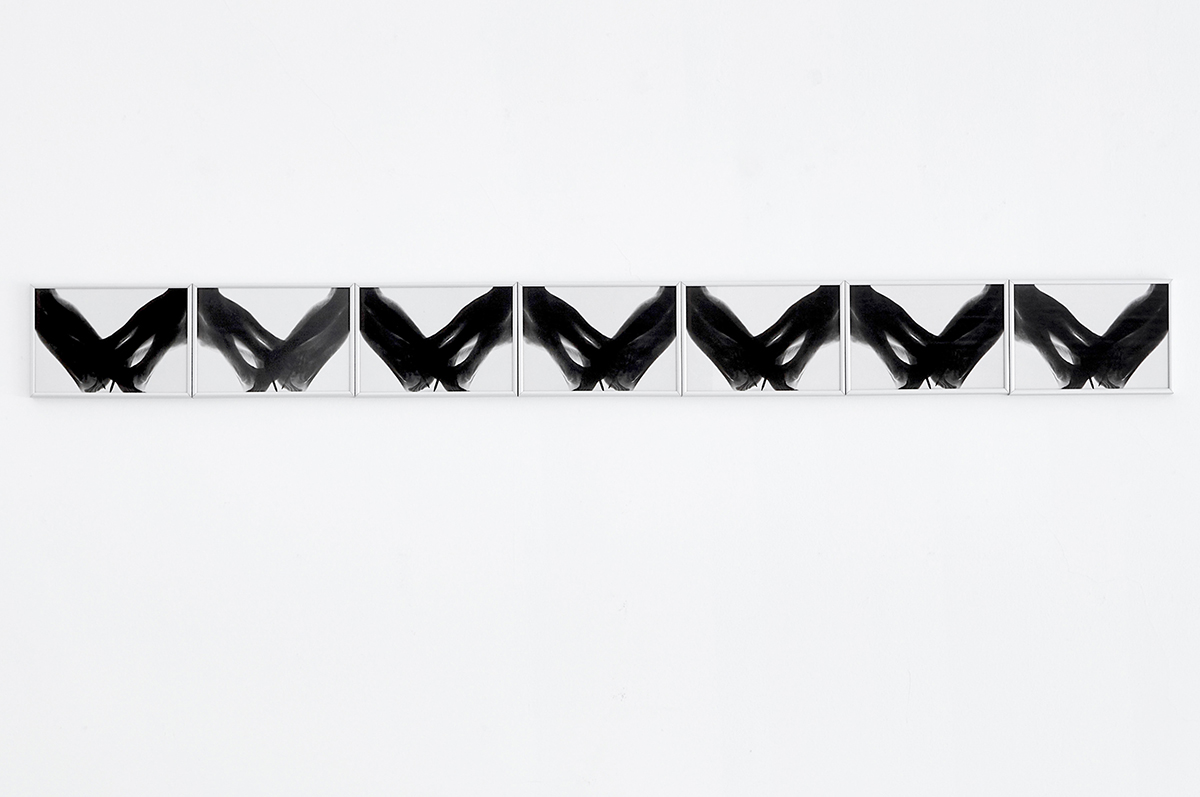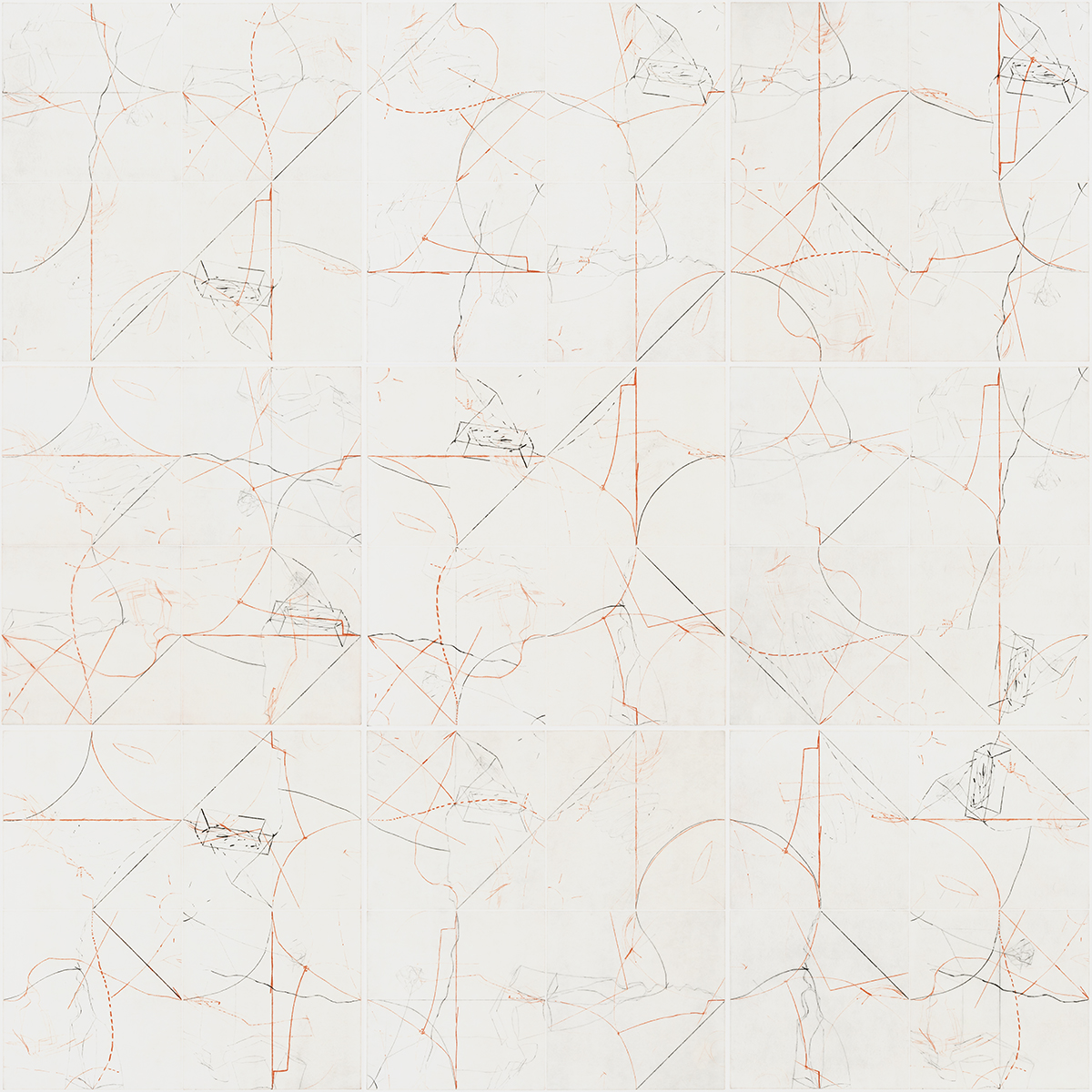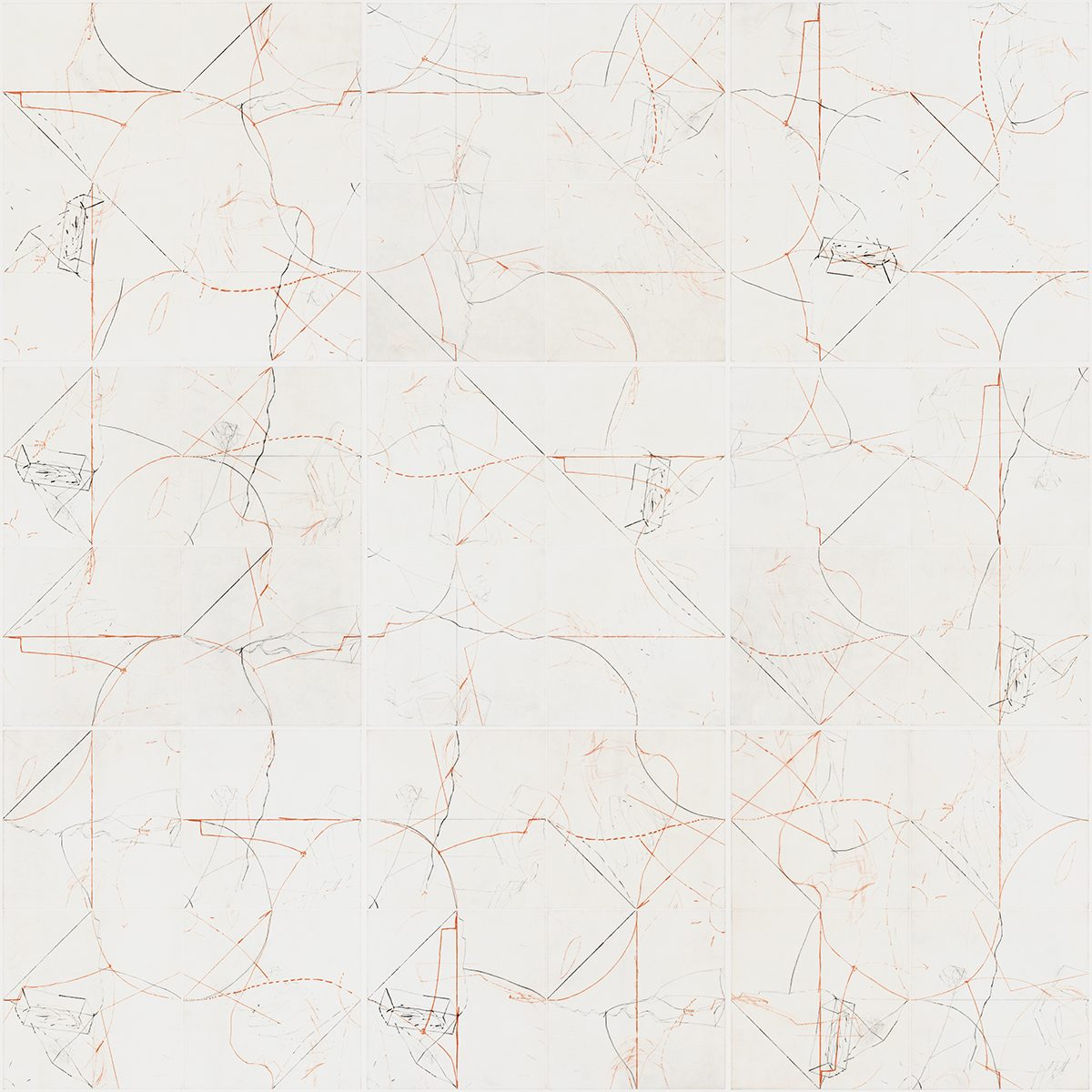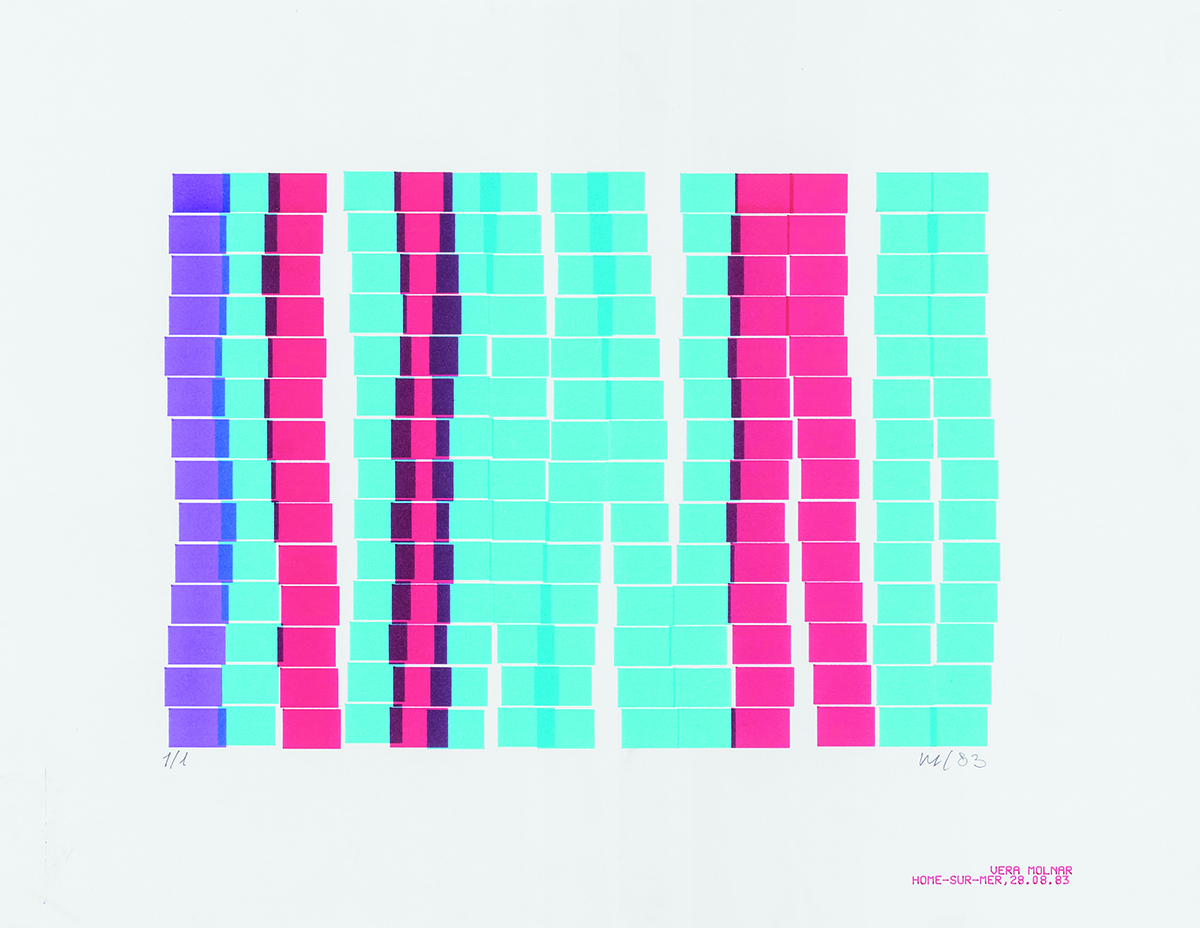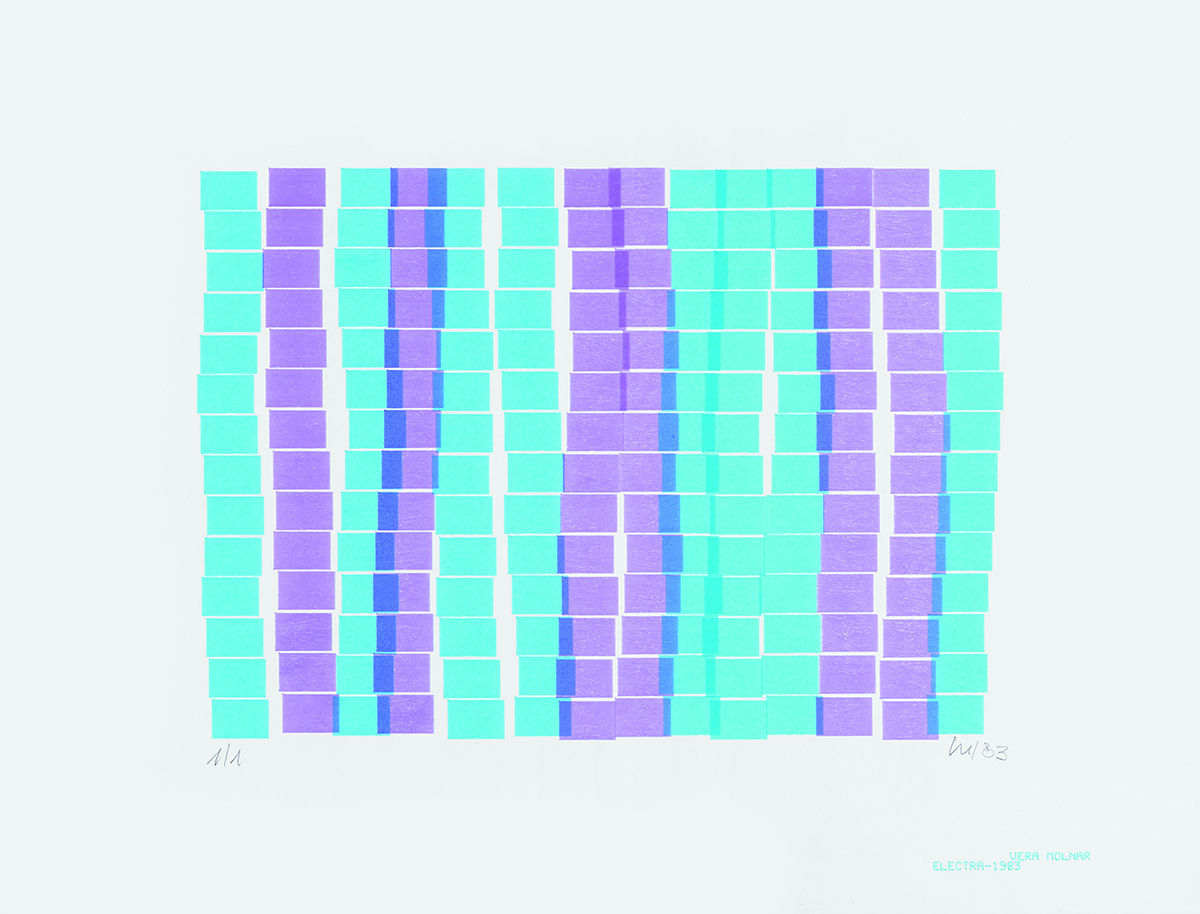Two Days, Two Weeks
2020. 06. 2-26.
Repetition plays an elemental role in everyday life, and by its very principle of operation always presupposes a kind of temporality. Such basic organic phenomena as the beating of the heart or breathing are repetitive in character, just as the natural phenomena of, for instance, day and night, or the cycles of the seasons. Periodic repetition, however, does not become constant and monotonous, as total and complete repetition never occurs. The mechanism also contains non-repetitive elements: the exceptional and the unexpected, which jolts us out of our usual mindset and alters our sense of time.
Without repetition and iteration, visual systems of communication – including fine art – could not have come into existence either. Repetition became one of the fundamental tools of serial art in the 1960s, while also becoming an approach regularly employed by representatives of minimal and conceptual art, among others. The works showcased by Vintage Galéria’s new exhibition – which borrows its title from two works by Gábor Attalai – were produced by artists using different types of repetition within various creative strategies.
Repetition within a work of art can serve to arrange various segments of time within a shared space. Gábor Attalai (1934-2011) showed interest in the representability of time as early as the 1970s. In an interview from 1981, he said: “Here I would mention time again, and the question of whether, as an object, it can be given expression. To this end, I have created numerous time objects, time stamps and time-relations. I was always interested in how much a given problem can convey within itself.” In his “time stamp” works – including those entitled One Day (1972), Two Days (1972) and Two Weeks (1972) – he used the stamp, which was an indispensible tool of validating official documents at the time, and which also related to the beginning international mail correspondence. In some instances, he used the stamp to impress a certain moment, while in other cases, he captured a fragment from the course of time, thereby also marking the time of the given work’s creation. The time interval covered the beginning of the creative process and the present moment of the artwork’s completion; Attalai stamped the dates below – and partly over – each other, thereby created different relationships between the signs.
Rhythmic articulation – another form of repetition – can also conceal an element of time. In Péter Gémes’s (1951-1996) work entitled Diary – One Week (1994), the individual images succeed one another in a linear sequence; upon viewing them creates the quality of temporality. For creating the series, Gémes used a photograph and its symmetrically flipped variation. For indicating weekdays, he arranged these two variants into a row, alternating them. The identically oriented images denoting the weekend interrupted the repetitive pattern, thereby closing the cycle. The work can also be interpreted along more subjective lines, as the artist used his own body and the title also presupposes a kind of personal reckoning: it is an experiment to face the passing time, to render time visible. While through the technique of photography, a fraction of time – the moment – can be recorded, this is not how Gémes used the medium. Instead, he worked out his own, unique version of photo use: he realised the pre-planned composition by photographing several shots onto a single negative. This, with a homogeneous background, led to the dissolving of contours, thereby evoking a sense of processuality.
Symmetry is also a form of repetition, in which mirrored units follow one another, and which Péter Türk (1943-2015) took advantage of when creating his series entitled Under his shadow I delighted to sit… (1993-1994). When creating the series, Türk worked in accordance with a predetermined sequence of movements. In the garden of his house in Balatonszepezd, he painted the shadows of foliage that were cast onto the paper with brushstrokes, and then, by folding the paper that contained black enamel paint, he pressed the surface together. On his test sheets, sometimes he even indicated the exact date and time, as the chosen moment effected the shape of the shadows projected onto the paper. Time kept continuously altering the space in which the artwork was created, thereby also played a role in the genesis of the work. In this way, the process was not centred on the preconceived arrangement of forms: the artist allowed things to reveal themselves instead. About the series, he wrote: “I unfold the two halves of the paper, and the symmetry is revealed, the sign of totality.” He also accorded spiritual significance to the work, which – in addition to the text written in connection to it – was also evidenced by his borrowing the title from Song of Songs (2:3).
The same thing can be perceived repeatedly in space – next to or above and below one another – and, thus, in chronological succession in Kamilla Szíj’s (1957) work: the line. The modules of the work, consisting of nine sheets and arranged into a matrix, can be positioned in any spot and orientation within the system. In spite of the varied positions, the marks always meet at the edges of the sheets, creating a ceaseless, continuous line. The lines require attention from three directions: firstly, from the direction of the earlier lines, secondly, in the direction of the line examined at the given moment, and thirdly, in the direction of the line we are anticipating. The traces incised into the plate with a drypoint needle, and transferred onto paper with the help of ink, appear as active participants in a process, as they offer insight into the “state of being in progress”. The work establishes its own framework of reference by avoiding closed repetition; the series could be continued in space and time to infinity. The resulting artwork, in spite of being the product of a reproductive graphic technique, is a unique piece, containing the possibilities of numerous variations, thus creating its own autonomous system and totality.
Similarly to Kamilla Szíj, Vera Molnar (1924) seeks to systematise and reduce her tools. In contrast to Szíj’s contemplative approach built on lines, Molnar, in her series entitled Electra (1983), created her own visual system with the help of the computer and an algorithm. The repetition of squares, filled with various colours and arranged into columns, unfolds against a homogeneous white background, establishing a system of elements that interact but do not fully share a common denominator. In the case of computer graphics, individual images primarily refer back to the limitless possibilities of variations that the given program can generate. This serial and generative mode of creation, with bringing chance into play, results in gradual variations and transformations in the series. With reference to this process, Molnar states: “I use simple shapes because they allow me step by step control over how I create the image arrangement. Thus, I can try to identify the exact moment when the evidence of art becomes visible.”
Zsófia Rátkai












